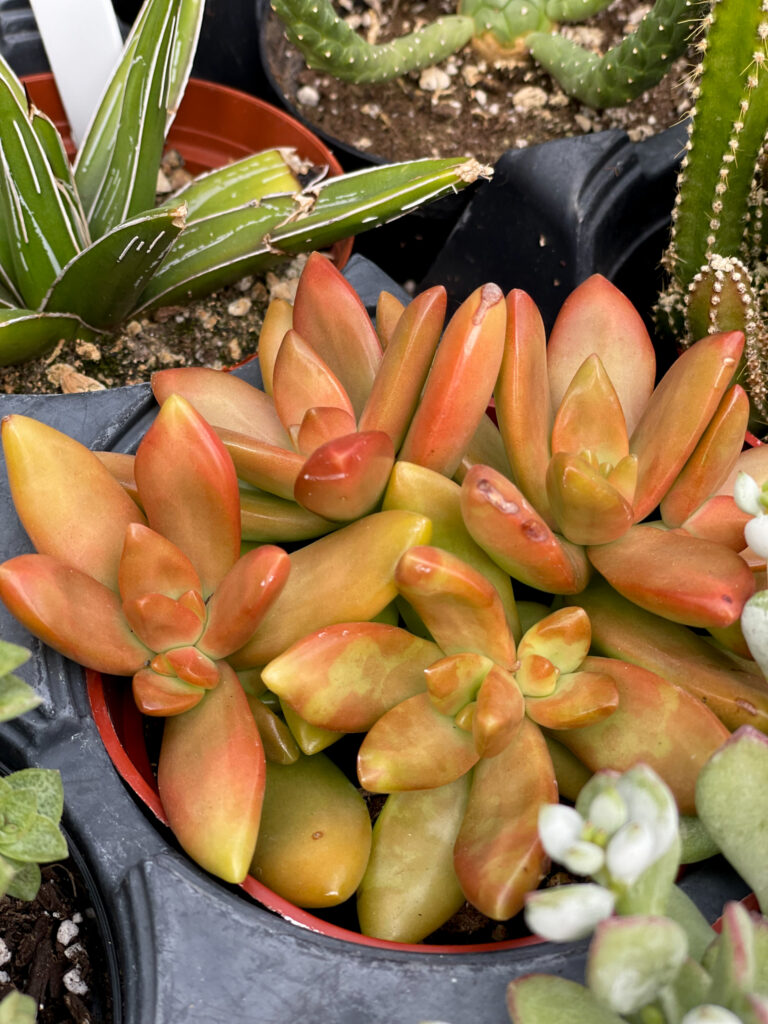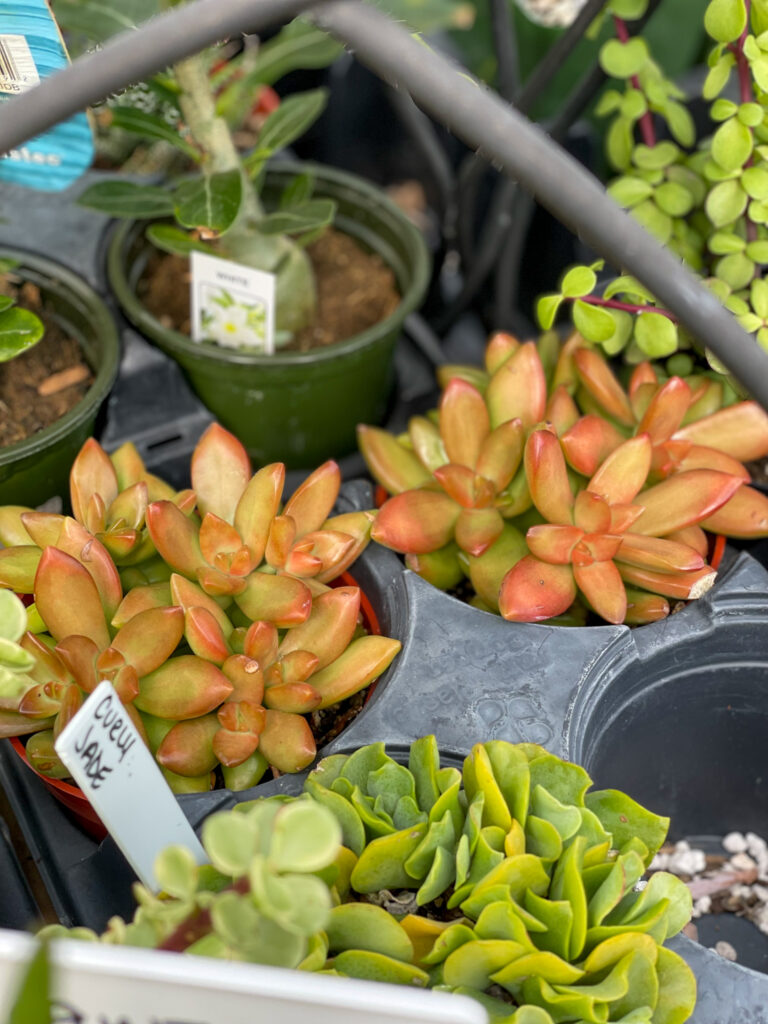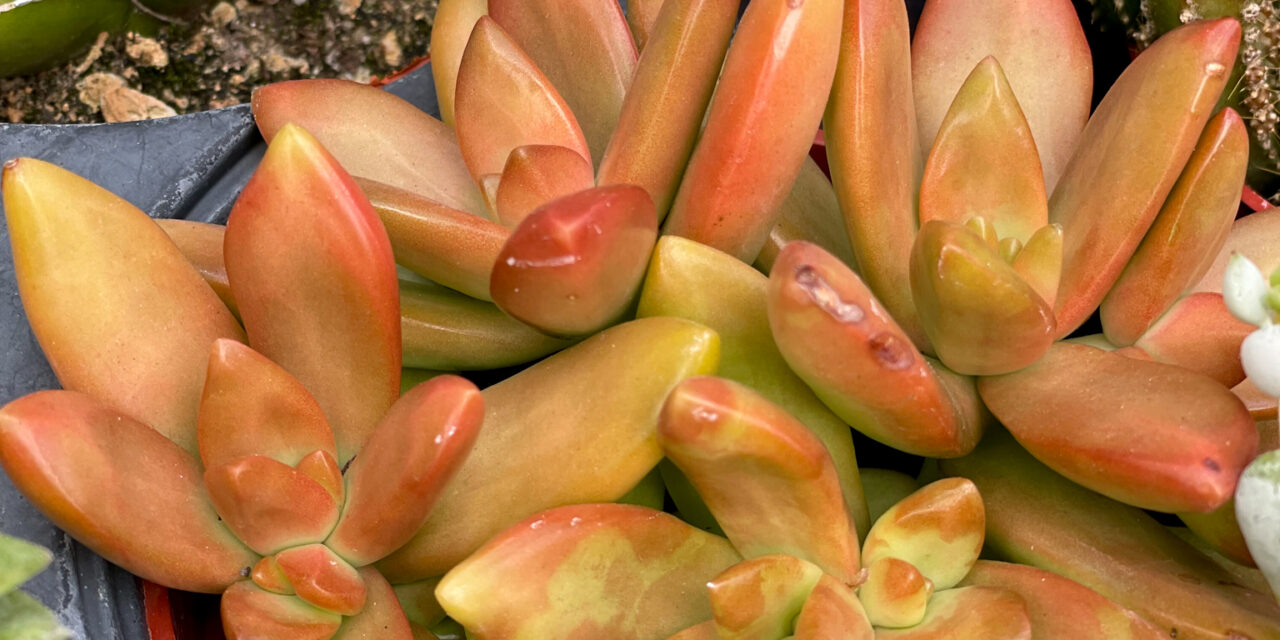Stonecrops prove it doesn’t take blooming flowers and bright colors to create a stunning garden. Instead, you can use xeriscaping to create a low-maintenance space with just as much variety as any flower bed. The patterns and colors that make up many of the most exciting stonecrops can keep any pair of eyes busy for hours.
One such stonecrop is Sedum Nussbaumerianum, otherwise known as Sedum Adolphi. This sedum plant embraces summer colors and turns copper with each ray it gathers. Read on to learn more about Sedum Nussbaumerianum, from characteristics to caring for this stonecrop. If you want to try your hand at cultivating Sedum Nussbaumerianum, you might be surprised at how easy it is to propagate this stunning stonecrop.

What is Sedum Nussbaumerianum
Otherwise known as Coppertone Sedum, Sedum Nussbaumerianum is an evergreen succulent native to South America. Designed for ground cover, Sedum Nussbaumerianum also belongs to the stonecrop family. Some discrepancies exist in who technically discovered the plant.
Sedum Nussbaumerianum has also been referred to as:
- Coppertone sedum
- Nussbaumer’s sedum
- Golden sedum
- Coppertone stonecrop
- Sedum nussbaumerianum coppertone
This particular stonecrop requires little care and thrives in USDA Zones 9 through 11. It is considered non-invasive and non-toxic to pets and humans. When kept as a houseplant, it provides humidity. Sedum Nussbaumerianum does well in containers, rock gardens, and hanging baskets, growing up to 12 inches in width and six inches high.

Plants Similar to Sedum Nussbaumerianum
Sedum Nussbaumerianum shares similar characteristics with the following sedum plants:
- Sedum burrito
- Sedum cauticola
- Sedum dasyphyllum
- Sedum lineare
- Sedum mexicanum
- Sedum morganianum
- Sedum rubrotinctum
- Sedum sieboldii
Smaller examples of sedum can be challenging to identify, especially Sedum Nussbaumerianum. Immature plants that haven’t had a chance to soak up the sun maintain a pale green look. It’s only after a few hours beneath the sun’s rays that you might begin to see a tinge of orange-pink color.
Sedum Nussbaumerianum Characteristics
Coppertone Sedum plants are easily recognizable during summer due to their copper leaves. Before the summer sun comes out, these leaves are typically pale to vibrant green. Each leaf ends at a point, but most leaves aren’t much longer than a few inches. A compact plant, Sedum Nussbaumerianum can exhibit tiny spines on leaves that may cause irritation.
During spring and through fall, Sedum Nussbaumerianum may bloom with white, star-shaped flowers growing in clusters. However, Sedum Nussbaumerianum doesn’t flower every year. Indeed, the white flowers only appear when temperatures are between 35 and 45 degrees Fahrenheit. Flowering occurs more often when Sedum Nussbaumerianum plants overwinter in a cool environment.
Sedum Nussbaumerianum Care
Spring is the best time to repot Sedum Nussbaumerianum. However, this slow-growing sedum typically doesn’t need repotting as often as other sedum plants. Sedum Nussbaumerianum does best outdoors, but you can also bring it indoors. Just know that the plant will likely lose its copper coloring without enough sunlight.
If you do bring your Sedum Nussbaumerianum inside, don’t shelter it for more than three months at a time. Lack of sunlight can cause it to become long and leggy, but more sun can mitigate these issues. Sedum Nussbaumerianum plants crave the sun more than they need moisture.
Sun and Soil
Achieving four to six hours of full sun will help your Sedum Nussbaumerianum plants thrive. Ambient temperatures of 50 to 70 degrees Fahrenheit and upwards of 40% humidity act as the perfect growing environment for this sedum. If you plan on nurturing juvenile Sedum Nussbaumerianum plants during the winter, grow lights can help provide the heat necessary for growth.
During the spring or early summer, you can supplement your Sedum Nussbaumerianum’s growth with weak or diluted fertilizer. Perlite, charcoal, or any other cactus potting soil works well when transplanting Sedum Nussbaumerianum. Avoid fertilizing in the fall and winter.
Introducing your Sedum Nussbaumerianum to the sun by hardening it off can help it adjust without risking sunburn. Once it acclimates to your environment, you can plant it outside permanently. Sedum Nussbaumerianum grows best in well-draining soil and will turn to a deeper orange-red as it gathers sunlight.
Watering
Even though Sedum Nussbaumerianum doesn’t require much water, paying close attention to your watering methods can help this sedum plant thrive. Ensure the soil drains and dries completely before you water again. Your watering schedule will vary between summer months and colder months as well.
It’s best to water your Sedum Nussbaumerianum every seven to 10 days during the summer. During this time, only the top one or two inches of soil need to be dry before you can safely water again. Extend your watering schedule to every 10 to 14 days as temperatures decrease and frost sets in. Sedum Nussbaumerianum tolerates frost for a few nights at most.
When choosing a pot for planting your new Sedum Nussbaumerianum, stick with terracotta or clay. These types of pots can absorb excess moisture not consumed by the plant, leaving the soil dry and healthy for the Sedum Nussbaumerianum. You can also choose pots with drainage holes to ensure a well-draining system.
Propagation
Because Sedum Nussbaumerianum doesn’t need lots of pruning, most gardeners cut leaves or stems for propagation. You can propagate Sedum Nussbaumerianum from seeds, leaves, or stems, but stem cuttings have the highest success rate. Most sedum cuttings root enough for transplanting after six or seven weeks.
Common Sedum Nussbaumerianum Issues
Like many sedum plants, Sedum Nussbaumerianum can experience fungal diseases and root rot if left in too much water. Lack of proper drainage can cause leaves to become soft, yellow, and mushy. At the same time, too much sun can cause sunburn, turning leaves brown instead of the vibrant orange of healthy Sedum Nussbaumerianum plants.
Various insects can plague Sedum Nussbaumerianum plants, including aphids, whiteflies, mealybugs, and slugs. Despite having pointed leaves with thicker bodies, Sedum Nussbaumerianum is only somewhat deer-resistant.

Summary
Sedum Nussbaumerianum mirrors the fiery brands of the bright sun with orange-red leaves that help it stand out among other sedums. Placing a Sedum Nussbaumerianum or two in your backyard or garden can add a subtle pop of color that signals the beginning of summer. Now that you know more about caring for and identifying Sedum Nussbaumerianum, why not add it to your home?


